Today, we interact with a virtual environment using a plurality of portable devices that mainly affect our visual and aural perception. However, the complete human experience isn’t limited to these two, but formed from five basic senses (sight, hearing, touch, smell, taste). As you might expect, for most people the main senses in the perception of reality are vision and hearing. According to the latest psychological research, these two embrace about 90% of the day-to-day experience of the person without perceptual disorders. And the honourable third place with approximately 10% goes to the sense of touch. Digits might differ for various individuals, but it’s quite difficult to deny the importance of a physical contact for the human beings. Every day we interact with a ton of electronic devices, some of them we carry around (like laptops or mobile phones) with others being wearable (like smart watches, wristbands, clothing). By introducing proper implementation, modern gadgets enable us not only to see or hear, but literally feel the virtual reality. That’s exactly where the haptic technology comes into play.
What is a haptic feedback technology?
Simply put, haptics is a technology, which allows one to receive tactile information through their sensations, by applying forces, vibrations, or touches. Haptics simulates an object or interaction from the virtual system, producing the feeling it’s real.
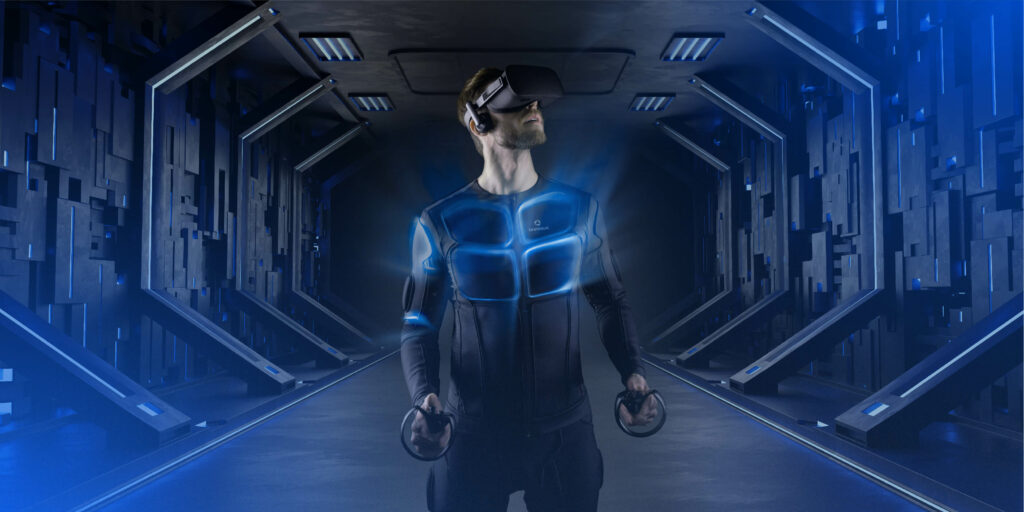
Mobile phone vibration is very often described as an example of haptic feedback technology. But it is just one and very simple illustration of how haptics can function. Haptics allows a user to interact with computer-based devices by receiving tactile and force feedback. The former may let us know what the texture of the object is (e.g. rough or smooth). The latter simulates some physical properties of the object, such as its weight or pressure.
Haptic feedback typology
Five main types of haptic feedback technologies (haptics) are
- force,
- vibrotactile,
- electrotactile,
- ultrasonic, and
- thermal.
Each of them is considered in detail below.
Force feedback
It is the kind of haptic technology that appeared first (starts in the late 1960s). Therefore, it is the most studied and well-implemented in different applications so far.
Force feedback stimulates the ligaments and muscles through our skin into the musculoskeletal system, whereas any other types of haptics affect top layers of skin receptors (technology called transcutaneous electrical nerve stimulation —TENS). The cutaneous devices (involving the outer layer of the skin) are quite compact and apply the acupressure on small areas of the body.
In contrast, force devices are mostly large (think about a powered exoskeleton as an example). They move together with a human and have an impact on large areas of the body, such as an arm or a leg. These devices are far more complex, as they are designed to both apply the force to the body part, and provide a person with sufficient freedom of movement.
There are two types of force feedback devices by human body parts emulation: biomimetic and non-biomimetic. Biomimetic devices move as human limbs and resemble them by their forms. Such devices are difficult to develop because ideally, they should have a functionality of human body and be suitable for different people. Non-biomimetic devices may be very different from the human body.
Another classification of the force feedback appliances (by the direction of the applied power) includes resistive and active devices. Resistive devices limit the movement of the user with the help of the brakes. Active devices restrict movements of the user or move the body in space by means of motors. Active devices can simulate a wider range of interactions, but they generally need to be more powerful than passive devices, and they are more difficult to control.
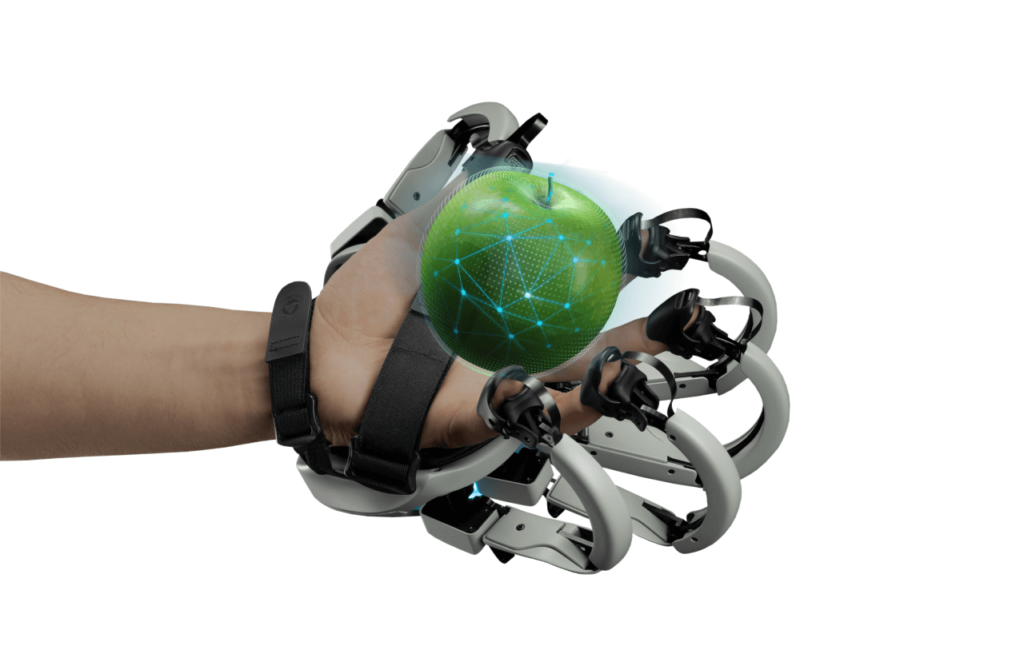
Vibrotactile feedback
Vibrotactile feedback is by far the most common type of haptics. Vibrostimulators apply pressure to the definite receptors of human skin. These receptors resemble “onion” layers’ structure and can accept vibrations of up to 1000 hertz. Ordinary human speech frequency varies from 80 to 250 hertz, so our skin can actually feel sounds.
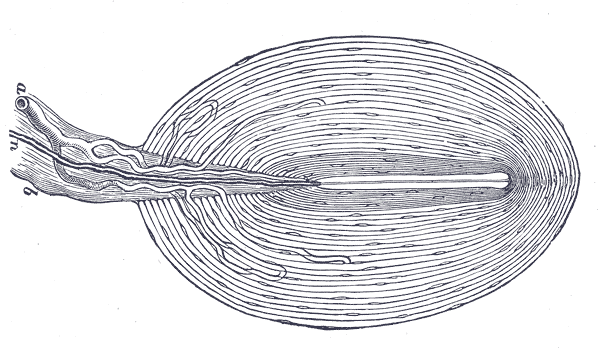
Source: Henry Gray (1918) Anatomy of the Human Body; Bartleby.com: Gray’s Anatomy, Plate 935
Electrotactile feedback
Electrotactile stimulators affect both receptors and nerve endings by applying electrical impulses. By means of electrical impulses, a user can receive a wide range of sensations which can not be reproduced with any other current feedback systems. This type of feedback has many forms depending on the intensity and frequency of the stimuli delivered to the skin. Sensations can also vary depending on the current, voltage, material, wave form, electrode size, contact force, hydration, and skin type.

The principal advantage of the electro-haptic feedback system, compared to vibrotactile or force feedback, is the absence of mechanical or moving parts. Another benefit of electro-neural stimulation is that the electrodes can be assembled into compact arrays and used to implement electrotactile displays.
Electrical muscle stimulation (EMS) technology is used in medicine for more than 30 years and has proven its safety. Moreover, electrical signals are the basis of the nervous system, so we can say confidently that this type of hapitc feedback is the best suitable for generating and simulating the real-world sensations.
Ultrasonic tactile feedback
Ultrasound is a sound wave of high frequency. One or more ultrasound emitters are used to create the subtle feedback. In such appliances the emitter located on one part of the body sends a signal to another part. This principle of transmission is called “acoustic time reversal”.
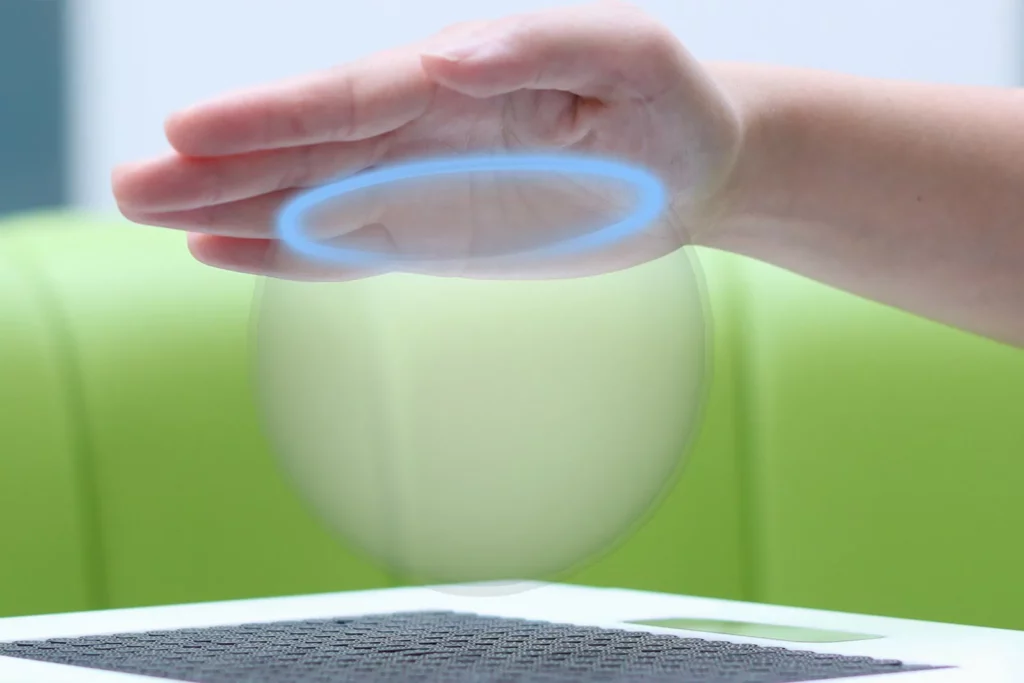
To ensure the impact on larger areas, it’s necessary to form a haptic feedback field. One emitter itself is not powerful enough, so, several emitter are used. Together they create invisible, tangible interfaces in the air. Ultrasound waves generate turbulence, which humans can feel through the skin.
The main advantage of the ultrasonic technology is that the user does not need to wear any accessories. At the same time this kind of haptic feedback is quite expensive and usually less perceptible than previously considered vibrotactile or electrotactile feedback.
Thermal feedback
For thermal feedback formation, the actuators grid is used. It is in direct contact with the skin. Most commonly, to implement this effect, the thermoelectric diodes (based on the Peltier effect) are used.
It’s important to note, that people don’t define well the place of the thermal stimulus unlike with tactile communication. Therefore, there is no need in many actuators to create a heat or cold feedback, and they can be positioned not so close to each other. Thus, in some way, thermal feedback devices are even easier to design.
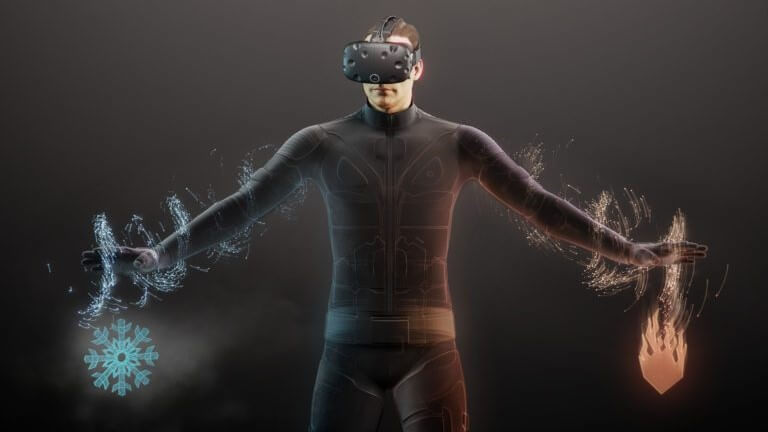
However, due to the law of energy conservation heat can not be taken from nowhere. It can only be moved from one place to another. Furthermore, it should be done quickly to provide a realistic feel. So, haptic suits using thermal feedback require quite a lot of energy.
Practical applications of haptic feedback
Based on the previous section, it’s quite easy to conclude that the haptic feedback feature has a great number of applications in different practical areas, from medicine and industrial training to gaming and entertainment. Let’s have a closer look at just some of the most common cases.
Automotive and aviation
The means of transportation have a lot of different points, where the benefits of the haptic feedback can be used.
For example, the car may benefit from the haptic feedback technology when it’s employed for conveying the diversity of information: spatial signals, warnings, communication, coded information, and other general data. To achieve the expected goals, the haptic feedback can be directly introduced into different car components like steering wheel, seat belt, pedal, seat, dashboard, or driver’s clothes.
Speaking about aircrafts, the purpose of haptic effects is mostly the same as in the previous case — provide a pilot with necessary information about the flight control, assisting in the management of the safe and economical flight regime (so-called flight envelope protection). Again, the haptic feedback actuators can be mounted on different components inside the cockpit and the controls, physically interacting with pilot’s body parts.
Medicine and dentistry
Medicine is by far one of the most important areas, that can benefit from the haptic technology use. As an example, the minimally invasive surgery (MIS) can leverage the specially crafted automatic laparoscopic tool with tactile and/or force feedback to palpate tissues for diagnosing if they are normal or abnormal. In comparison with the conventional research and surgery methods, in the considered case the surgeon has much more control and hence the overall procedure becomes a way safer for the end patient.
Dentists can be educated on the specific VR models, using the haptic feedback to provide more realistic medical operation feel.
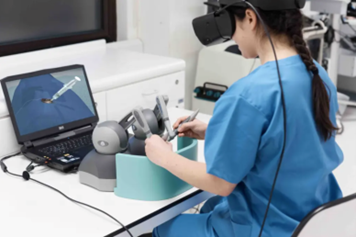
Computers and mobile devices
We interact with desktop computers, laptops, tablets, mobile phones, etc. on a daily basis. Incorporation of the haptic feedback in the named devices and proper implementation of the related reactions on different user’s actions leads to better UX and hence more satisfaction from device use.
The famous examples of the haptic feedback in the public technology sphere are the last-years Apple products. So, the latest MacBooks’ trackpads and iPhones’ screens starting from 2015 incorporate the patented Taptic Engine to produce Force Touch and 3D Touch feature, creating the unique and flawless user experience in respect to the system reaction to different executed actions.
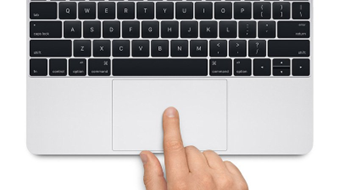
Gaming and entertainment
Almost any new and captivating technology is inevitably tested in gaming and entertainment, as this sphere generates much profit and in fact drives the progress forward. And the various types of haptic feedback are no exception.
The explosive growth of the immersive interactive attractions number, spreading throughout the malls and thematic parks is also powered by the incorporation of the quality haptics features, that can produce the famous “wow effect” on the user of any age.
And of course, the games are also involved in the show practically from the very dawn of the haptic technology. Using the diversity of physical sensations transited via the controllers like joysticks, gamepads, steering wheels, jetseats with force or electrotactile feedback, the game persuades you in the reality of the on-screen or VR picture. Using the electric signals of different parameters, the haptic devices may reproduce the effects of the weapon recoil, steering wheel resistance, bullet hit, rain or sandstorm and many more. And the modern consoles controllers like Sony Playstation 5 DualSense and Nintendo Switch Joy-Cons utilize the haptic feedback to enrich the gamer’s experience.
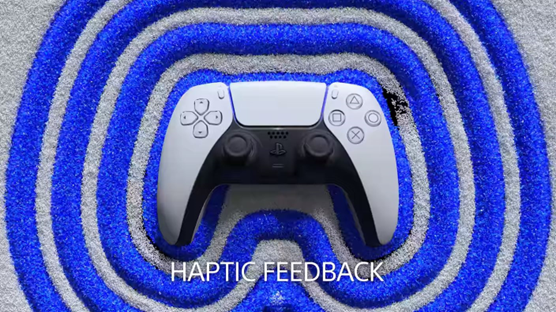
Our brand devices with haptic feedback
TESLASUIT
TESLASUIT’s full body haptic feedback system uses electro muscle stimulation (EMS) and transcutaneous electrical nerve stimulation (TENS) to simulate a range of real-life feelings and sensations. Using this system, TESLASUIT can provide physical feedback based on the visual simulation that may be experienced on a flat screen or immersive reality devices (VR/AR headsets).
Follow the link, to learn how TESLASUIT can provide more immersive experiences, build muscle memory, autocorrect physical training technique, assist in industrial training and build deep learning environments.
TESLAGLOVE
This is our brand-new glove with Haptic Feedback. As the exoskeleton structure, the glove repeats the anatomic shape of the human’s hand and enables some individual size adjustment. The active force feedback technology can shift the fingers or limit their movement, depending on the virtual or augmented reality simulations.
Electronic tactile displays for each finger emulate diverse sensations, create perception of solid object texture and various surface types.
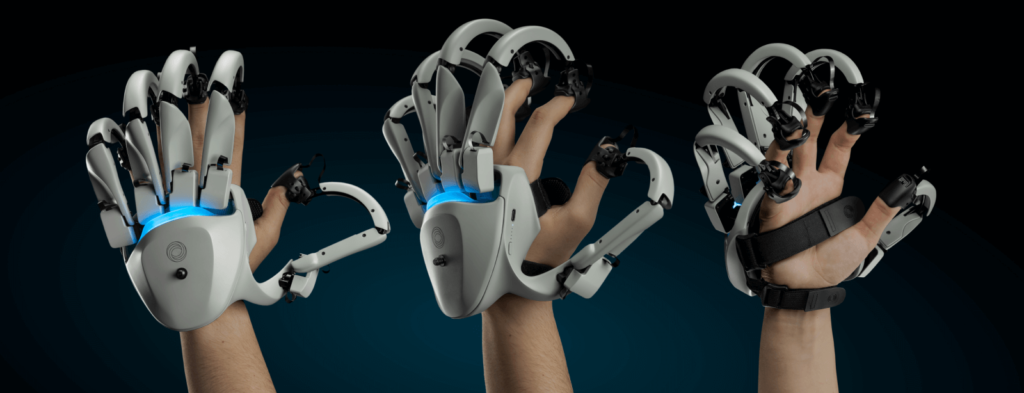
Learn more about the history of haptic technology in video gaming industry. Earlier we have also published posts on “The History of Virtual Reality: Ultimate Guide. Part 1” and “The History of Virtual Reality: Ultimate Guide. Part 2“.
